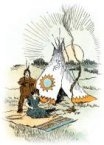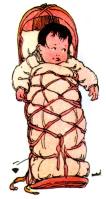
Worksheets and No Prep Teaching Resources
Reading Comprehension Worksheets
Native Americans

Native Americans
 Worksheets and No Prep Teaching Resources Reading Comprehension Worksheets Native Americans |
 Native Americans |
| edHelper's suggested reading level: | grades 4 to 6 | |
| Flesch-Kincaid grade level: | 6.13 |
|
Native Americans of the Plateau and Great Basin Area
By Jennifer Kenny |

|
 1 The area where Native Americans settled east of the Northwest Coast Area and west of the Plains is considered the cultural area of the Plateau and Great Basin. The Plateau section had more water available. The Great Basin portion had huge stretches of barren desert. All in all, it was a tough environment in which to settle. Native Americans faced many obstacles there.
1 The area where Native Americans settled east of the Northwest Coast Area and west of the Plains is considered the cultural area of the Plateau and Great Basin. The Plateau section had more water available. The Great Basin portion had huge stretches of barren desert. All in all, it was a tough environment in which to settle. Native Americans faced many obstacles there. |
Create Weekly Reading Books
Prepare for an entire week at once! |
| Leave your feedback on Native Americans of the Plateau and Great Basin Area (Grades 4 to 6) (use this link if you found an error in the story) |
 |
Native Americans
|
 |
United States
|
|
|
 | Fifty States Theme Unit |
 |
Document Based Activities |